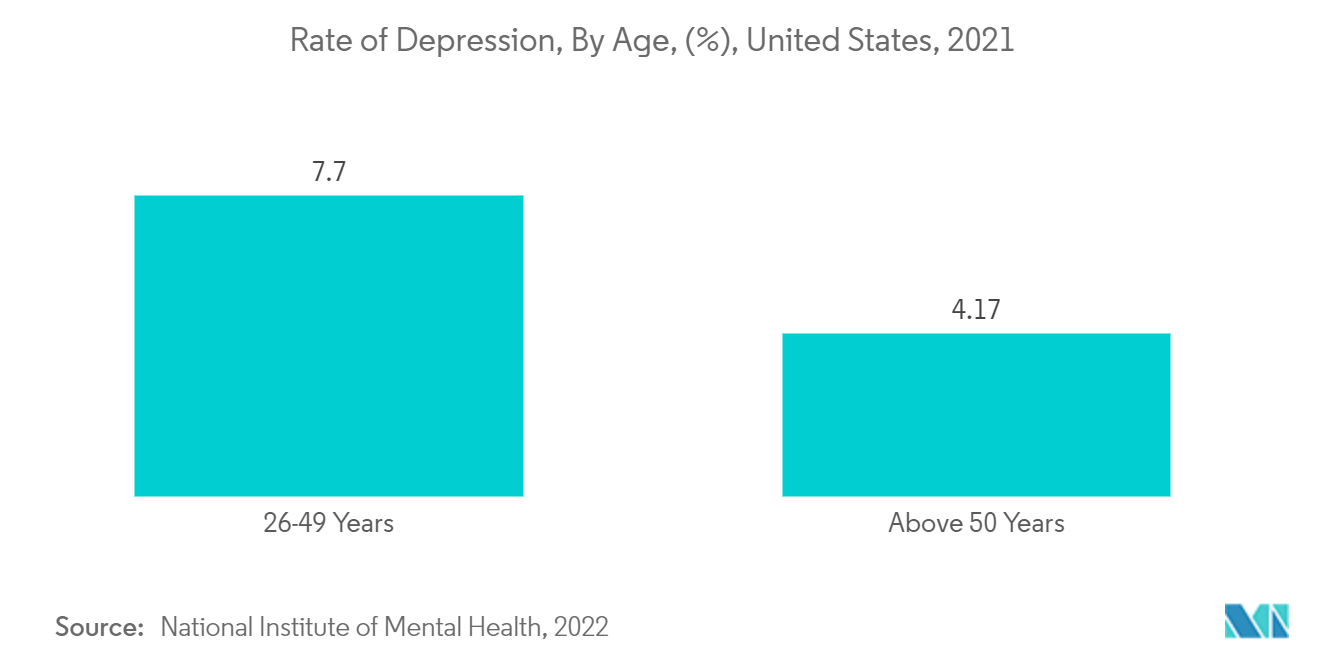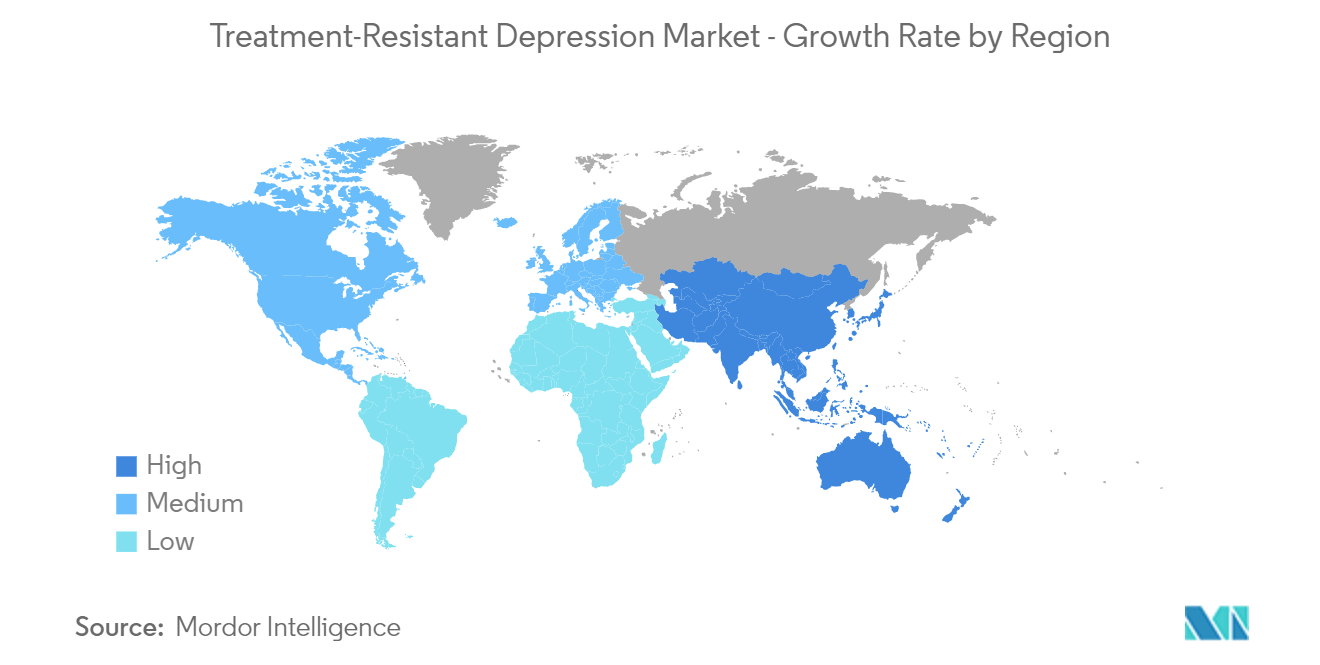Market Trends of Global Treatment-Resistant Depression Industry
This section covers the major market trends shaping the Treatment-Resistant Depression Market according to our research experts:
The Retail Pharmacies Segment is Expected to Hold a Major Market Share in the Treatment- Resistant Depression Market
The Retail pharmacies segment is expected to hold a major share in the studied market during the forecast period. This is mainly due to the factors such as the increasing prevalence of TRDs, increasing research studies, and product launches. A retail pharmacy is referred to as a pharmacy acting as a retail store, selling drugs to patients. Retail pharmacists are responsible for dispensing medications correctly for customers to use at home, as well as educating the customers on their medications and answering any questions the customers have.
In April 2020, an article titled' Major Depressive disorder' stated that major depressive disorder was ranked as the third cause of the burden of disease worldwide in 2001 by the World Health Organization (WHO), which has projected that this disease will rank first by 2030. It is diagnosed when an individual has a persistently low or depressed mood or decreased interest in pleasurable activities, lack of energy, poor concentration, appetite changes, or suicidal thoughts.
Moreover, as per the study published in August 2021, titled 'Prevalence and Impact of Treatment-Resistant Depression in Latin America: a Prospective, Observational Study' The prevalence of TRD in Latin American sites among patients with MDD was 29% (429 patients). By country, the lowest prevalence of TRD was observed in Mexico (21%) and the highest was observed in Brazil (40%); prevalences in Colombia and Argentina were 32% and 33%, respectively. Overall, the prevalence of TRD was numerically higher in public sites of care (31%) than in private sites of care (27%), and varied by more specific categorizations (19% among patients in public psychiatric clinical sites vs 60% among patients at general hospitals. Thus, the statistics indicate that there is an increase in the prevalence of treatment-resistant depression, which is expected to increase the distribution of drugs through retail pharmacies, thereby contributing to the market growth.
Product launches are another factor in the growth of the market. For instance, in December 2021, Dr. Reddy launched enlafaxine ER Tablets in the United States market. The product is therapeutically equivalent to Venlafaxine Extended-Release Tablets, 150mg, and 225mg, of Osmotica Pharmaceutical U.S. LLC. A selective serotonin and norepinephrine reuptake inhibitor (SNRI), Venlafaxine Extended-Release tablets, are indicated for major depressive disorder (MDD) and social anxiety disorder (SAD). The increasing product launches are anticipated to fuel the provision of the drugs through retail pharmacies, thereby boosting the market growth.
Thus, the segment is anticipated to witness significant growth over the forecast period due to the abovementioned factors.

North America is Expected to Hold a Significant Share in the Market and Expected to do Same in the Forecast Period.
The increasing cases of depression are one of the major factors that are expected to drive the overall growth of the treatment-resistant depression market. Moreover, the rise in the geriatric population in the United States is expected to create more opportunities for the market players in the region.
According to the Anxiety and Depression Association of America, in 2021, anxiety disorder is one of the most common mental illnesses in the United States, affecting approximately 40 million American adults every year, which is 18.1% of the total population United States. Additionally, more than 16.1 million American adults suffer from major depressive disorder every year and it is more prevalent in women than men. Moreover, as per the study published in 2021, titled 'The Prevalence and National Burden of Treatment-Resistant Depression and Major Depressive Disorder in the United States', the estimated 12-month prevalence of medication-treated MDD in the United States was 8.9 million adults, and 2.8 million (30.9%) had TRD. The total annual burden of medication-treated MDD among the United States population was USD 92.7 billion, with USD 43.8 billion (47.2%) attributable to TRD.
Thus, the increasing prevalence of disorders and increasing demand for treatment-resistant depression are expected to drive the growth of the market during the forecast period.


